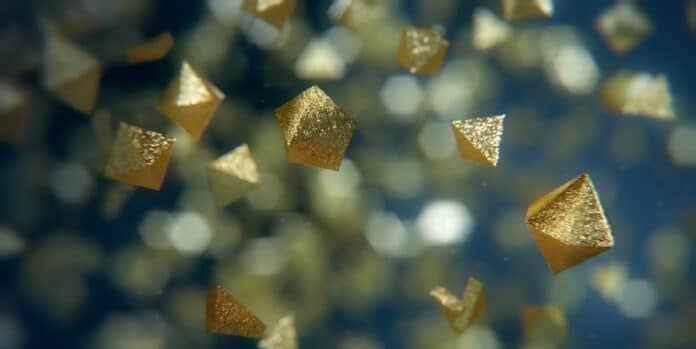New research from UT Southwestern Medical Center suggests that a daily suspension of gold nanocrystals improved brain energy activity and function in patients with MS and PD. Published in the Journal of Nanobiotechnology, these findings may lead to a new treatment for neurodegenerative diseases.
Peter Sguigna, M.D., leads the active MS trial and is an Assistant Professor of Neurology and an Investigator in the Peter O’Donnell Jr. Brain Institute at UT Southwestern said, “We are cautiously optimistic that we will be able to prevent or even reverse some neurological disabilities with this strategy.”
Dr. Sguigna explained that “the brain needs energy from an adenosine triphosphate (ATP) molecule to function correctly. As people age, the brain’s ability to produce energy declines. This decline is swift and severe in neurodegenerative diseases like MS, PD, and ALS.”
Studies have shown that boosting the ratio of nicotinamide adenine dinucleotide (NAD+) to its partner, nicotinamide adenine dinucleotide + hydrogen (NADH), could help slow down or even partially reverse this energy deficit in patients with these diseases.
Dr. Sguigna and his team teamed up with Clene Nanomedicine, a company developing a treatment called CNM-Au8 using gold nanocrystals. This treatment aims to help with brain conditions like MS and Parkinson’s disease by improving the balance of energy in brain cells.
They conducted two trials, REPAIR-MS and REPAIR-PD, involving 11 MS patients and 13 Parkinson’s patients. Participants underwent brain scans before and after taking CNM-Au8 for 12 weeks to see if they reached the correct brain targets.
The 24 patients in the study showed an average increase of 10.4% in their NAD+/NADH ratios after taking CNM-Au8, indicating that the treatment was targeting the brain as intended. Other energy molecules like ATP also normalized by the end of treatment, which could be another positive effect.
Patients with Parkinson’s disease reported improved daily motor experiences, suggesting that CNM-Au8 might help with functional symptoms. No severe side effects were reported.
Dr. Sguigna noted that while these results are promising, more studies are needed. The REPAIR-MS trial will continue to enroll participants to see if similar findings are seen in progressive MS.
While initial findings are promising, further research is crucial to comprehensively grasp GNP treatment’s benefits and safety profile in the context of neurodegenerative diseases.
Continued efforts in research and clinical trials will provide essential insights into the efficacy and long-term effects of GNP therapy, ultimately advancing our understanding and utilization of this innovative approach in managing MS, PD, and potentially other neurodegenerative conditions.
Journal reference:
- Ren, J., Dewey, R.B., Rynders, A. et al. Evidence of brain target engagement in Parkinson’s disease and multiple sclerosis by the investigational nanomedicine, CNM-Au8, in the REPAIR phase 2 clinical trials. Journal of Nanobiotechnology. DOI: 10.1186/s12951-023-02236-z.
